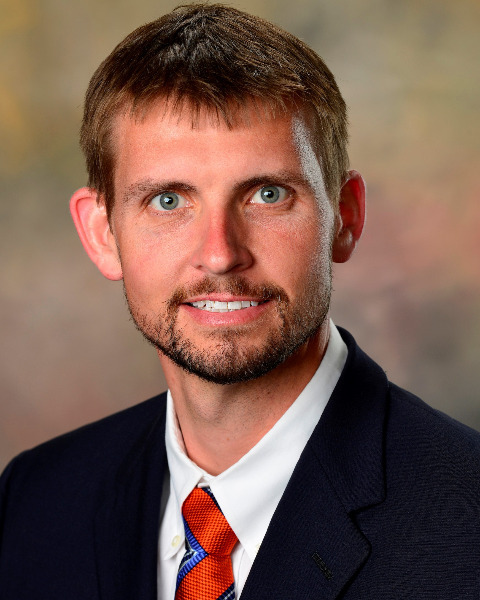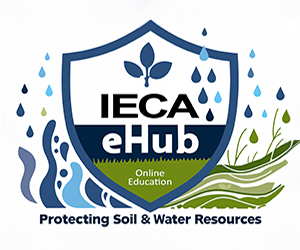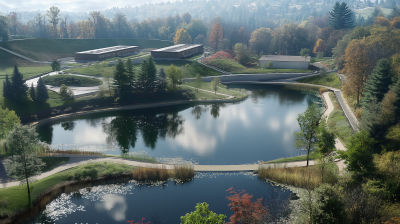
Best of IECA 2023 Annual Conference
- Registration Closed

Best of IECA 2023 Annual Conference
Select content from the IECA 2023 Annual Conference is now available on demand. Annual Conference education featured timely content presented by knowledgeable experts that provides real world solutions to industry problems.
Balancing Roadways with Vegetated Systems: Seeking Resilient Stormwater Management in a Linear Environment to Meet MS4 Requirements
Brenda Macke, PE, PMP, CFM
Project Manager
Burns & McDonnell
Kansas City, Missouri, United States
Co-presenter: Kylie Clark, MUP, AICP, ENV SP
Urban Planner
Burns & McDonnell, United States
Co-presenter: Dale Kirmer, Professional Engineer (he/him/his)
Engineer
Kansas Department of Transportation
Topeka, Kansas, United States
The Kansas Department of Transportation (KDOT) was issued six new MS4 permits in 2020, applicable to the state-maintained roadway in six urbanized areas. The new format of the MS4 permit issued by the Kansas Department of Health and Environment (KDHE) requires permittees to accumulate a required number of points in each permit year, based on a defined menu of Best Management Practices (BMPs) listed for each of the minimum control measures. This predefined menu of BMPs is centered around municipal stormwater implementation, presenting challenges for application in the linear highway environment. This paper and presentation will explore how KDOT is addressing these challenges, with a focus on post-construction stormwater management implementation and how KDOT is addressing other BMPs that are more municipal focused.
Chemical Treatment of Sediment Retention Ponds in an Ever-Changing Climate Landscape
New Zealand, and in particular Auckland City, has soils with high concentrations of clays lurking just beneath the topsoil. Being relatively close to the surface, any earthworks activity results in the exposure of these soils to the erosive effects of nature, in particular rainfall. Out of the three soil constituents’, clays are the hardest to erode, however once eroded clays are the most difficult to remove from water owing to their small particle size and surface charge. Auckland, and now the majority of New Zealand, have attempted to tackle the problem of sediment generation from construction sites and the resulting sedimentation of waterways and the environment by trapping sediment on site. The industry and regulators have lent heavily into sediment control by designing robust sediment retention ponds (SRP) and enhancing their treatment efficiency with chemical coagulants and flocculants.
Considerations When Permitting Construction Projects at Existing Facilities
Construction projects that are on existing and operating facilities can pose additional concerns not associated with greenfield construction. These facilities may have existing permits, with specific sampling parameters outlined, that your project will have to consider. There may be the potential for contamination on-site, and special waste handling procedures that will have to be addressed. It may even affect how you permit the project. These items may come into play when developing your Stormwater Pollution Prevention Plan (SWPPP) and how waste material is handled.
Improving the Design and Performance of Double Row Sediment Barriers
Sediment barriers (SBs) are stormwater management devices often installed along the perimeter of a construction site to intercept and treat overland sediment-laden flow prior to discharge into the surrounding environment. Effective SB practices remove stormwater pollutants by creating a temporary impoundment upstream of the practice which facilitates sediment capture via sedimentation. Controlling agencies and design practitioners often specify the installation of two SB practices (i.e., primary and secondary SB) in areas where enhanced stormwater treatment is critical due to downstream environmental concerns (e.g., impaired waters). This study sought to identify the overall performance of a commonly specified double row SB (i.e., double row silt fence), as well as six alternative designs that utilized various secondary SB practices that could be easily paired with a primary silt fence SB.
Largely Unchanged 1990s Sediment Treatment Design in the Context of a Changing Climate and an Ever-changing Landscape of Construction Related Compliance Conditions
New Zealand arguably leads the world in the design, building and operation of the high efficiency sediment retention ponds. While the rest of the globe works to catch up with this highly effective technology the New Zealand leaders in the deployment of this approach have their eyes on the future, a future where changes in climate and compliance standards represent challenges to the success of these 30-year-old design specifications.
Intended to provoke, this opinion piece takes a reflective look at the implications for contractors in 2022 and beyond who have grown up with Auckland Council’s Technical Publication 90 (TP90) and more recently Guidance Document 5 (GD05). As design specification bibles these may now be starting to show inconsistent outcomes in certain circumstances.
Let's Settle It: What Does It Take for an In-channel Sediment Basin to Be Effective?
Jaime C. Schussler, PhD, CPESC IT, EIT
Assistant Professor
Oklahoma State University
Stillwater, Oklahoma, United States
Sediment basins can effectively capture sediment if properly designed and implemented; however, design and installation techniques are greatly variable. In-channel sediment basins were identified as common practices on Iowa DOT construction sites and have been evaluated using field monitoring and large-scale testing techniques since 2018. In the spring of 2022, performance evaluations were completed at the Auburn University Stormwater Research Facility. The current Iowa DOT temporary sediment control basin standard specifies constructing an earthen dam across a conveyance channel to create an impoundment favorable for sedimentation, which is dewatered through a perforated riser pipe and auxiliary spillway. Researchers evaluated sediment basin performance based on the sediment retention volume and turbidity reduction provided by structural and chemical treatments.
Monitoring Construction Site Runoff for BMP Performance
Testing erosion and sediment control practices is an important part of making recommendations for their use or even their discontinuation. The best way to conduct these tests is under controlled laboratory or field conditions in which the variables are largely controlled. However, it can also be important to see how these practices perform under actual construction site conditions, which may include a wide variety of storm events, non-ideal conditions, and influences of construction site management. This presentation will review how the McLaughlin team has approached construction site BMP testing, the results, and what we learned along the way.
Monitoring Water Quality in and out of Sediment Basins During Highway Construction
Christina Kranz, PhD (she/her/hers)
Postdoctoral Research Assistant
North Carolina State University
Raleigh, North Carolina, United States
Co-presenter: Richard A. McLaughlin, Professor and Extension Specialist North Carolina State University Raleigh, North Carolina, United States
Sediment discharge from construction sites can have harmful effects on aquatic life. Sediment basins are often used to capture runoff with high loads of sediment to settle out the suspended sediments (SS) prior to discharging into adjoining waters. Polyacrylamide (PAM) is widely used as an effective flocculent to improve SS capture. PAM can be placed in channels and pipes leading to the sediment basin to dose the runoff and mix the PAM with the SS. We monitored water quality in seven sediment basins during the construction of I-540 in the Raleigh, North Carolina area over the course of three years.
Reefton's Globe Pit Holistic remediation using the 5 Fundamentals of Successful Rehabilitation
Joe Johnson, Business Development Manager - NZ DuraVeg From PGG Wrightson Turf Christchurch, Canterbury, New Zealand
The former Globe Progress Mine is located just outside of Reefton which is on the West Coast of New Zealand’s South Island. The mine is on it was way to “closure”, its restoration project is in its final years following the extensive mining practices that have now come to an end. Central to the project is the re-establishment of vital ecosystems in the post-mining landscape. The restoration areas predominately include species native to New Zealand. One of the areas located on the site yet to be fully rehabilitated is the “Globe Pit”. As the site was an open pit operation. There was 30 hectares of benches, low organic matter and limited access which would provide unique challenges to obtain vegetation. These challenges were overcome following the five fundamentals.
Credit Information
Eight (8) Professional Development Hours
IECA ProPlus Members | $100 USD
IECA Members | $150 USD
Nonmembers | $200 USD

Brenda Macke
CFM Project Manager
Burns & McDonnell Kansas City
Brenda is a professional engineer, project management professional, and certified floodplain manager, specializing in sustainable stormwater solutions. She has strong project management skills combined with technically proficiencies in practical project implementation from planning through design and construction phases. Her passion is planning and designing sustainable infrastructure, blending traditional inlet and pipe systems with green infrastructure facilities. Brenda’s work includes a variety of regional and national projects focused on helping communities meet NPDES Phase II regulations, FEMA requirements and EPA consent orders.

Dale Kirmer
Engineeer
Kansas Department of Transportation
Dale is a professional engineer with the Kanas Department of Transportation (KDOT) with the responsibilities including MS4 program coordinator, Highway Utility Permit Coordinator, Road Weather System Coordinator and KanDrive Application Assistant Coordinator. He has worked with the MS4 program since 2006. Dale has helped KDOT comply with increasing requirements of the MS4 Phase II Permits in Kansas, and how these are applied to a transportation agency. KDOT maintains 10,000 center line miles of highway with 6 District Shops and 25 Area Shops.

Chris Wilcox
Senior Environmental Advisor
HEB Construction
Dr Christopher Wilcox is a senior environmental advisor for HEB construction, a tier 1 construction company in New Zealand where he has been in the earthwork and construction industry for the last 5 years. Chris earned a PhD in chemistry from the University of Auckland in 2019 focussing on antimicrobial polymers, which has very little to do with the role he now finds himself but has allowed him to quickly learn, understand and specialise in the role of water treatment chemicals on site contaminated water and runoff. Day to day he is involved in providing environmental support to HEB’s projects in the Auckland region, including civil and land development projects through to structures such as bridges and large roading infrastructure. Chris enjoys spending his free time with his wife and three young children.

Kenneth A. Gouvion
Senior Environmental Scientist
Burns and McDonnell Engineering, Inc.
Ken Gouvion is a Staff Environmental Scientist with Burns and McDonnell Engineering Company, Inc. He is part of the Environmental Health and Safety Compliance & Inspection Department and specializes in National Pollutant Discharge Elimination System permitting and monitoring of linear construction projects. Ken has developed Stormwater Pollution Prevention Plans (SWPPP) and Erosion and Sediment Control Plans (ESCPs) for a variety of projects including electrical transmission line and gas pipelines, among others. Ken also coordinates and participates in environmental and constructability surveys, conducts compliance monitoring of active construction sites, and assists with permitting of new construction projects.
Ken has provided SWPPP training and onsite construction compliance on electrical transmission lines, substations, power stations, and pipeline projects in Alabama, Kentucky, North Dakota, Oklahoma, Texas, and Wyoming. He has developed SWPPPs and assisted with permitting for a variety of projects in 22 states and Indian Country Lands, and has a broad comprehension of the stormwater regulations in each state

Jarrell B. Whitman
Assistant Professor
Middle Tennessee State University
Dr. Whitman is an Assistant Professor in the School of Concrete and Construction Management at Middle Tennessee State University. He specializes in construction site erosion and sediment control design and implementation, heavy civil project management, and MS4 analysis. His current research efforts focus on evaluating and improving erosion and sediment control practices installed on highway construction sites

Simon N. Cathcart, MSc(Hons) CEnvP CPESC
National Environmental Manager
HEB Construction Ltd
I'm an Environmental Practitioner with a focus on building and leading the best team of environmental and sustainability professionals in the New Zealand construction industry. Consistently demonstrating to our clients, communities and regulators that HEB Construction leads the Tier 1 construction companies that build our Nation's infrastructure in delivering sound, straight forward, and efficient management of environmental performance and compliance across the vast array of environmental matters that require attention when constructing large complex projects in sensitive environments.
Experience allows me to quickly identify and direct Projects and Clients along the most effective and efficient path to address often complex hurdles and roadblocks created by conditions and constraints imposed by resource consents /Designations/wildlife permits/archaeological authorities while my strong understanding of construction methodology, constraints and implications, allows me to find the very best solution for the environment.
I am passionate about and focused on:
1. reducing planning bureaucracy and red-tape that actually has not benefit for the environment by simply ensuring the best environmental outcomes through delivery of industry best practice.
2. reducing the cost for our clients and communities of the ever growing burden of imposed obligations created by consultants who then conveniently solve these unnecessary challenges for a fee.
3. raising the standard of environmental performance within the construction industry.
4. delivering value for money to our clients and our communities

Jaime Schussler, M.S., CPESC-IT
Assistant Professor
Oklahoma State University
Dr. Jaime Schussler is an assistant professor in the School of Civil and Environmental Engineering at Oklahoma State University. Dr. Schussler’s research focuses on stormwater management, specializing in erosion and sediment control. Her work aims to find implementable solutions to manage increased stormwater runoff and sediment loads from construction, urban, agricultural, and reclamation sites. Her experience extends to surface water hydrology, water resources engineering, and surface water quality.

Richard McLaughlin, Ph.D.
Raised in Maryland, Dr. McLaughlin attended Virginia Tech for his undergraduate degree in Natural Resource Management. He then studied forestry, soils and soil chemistry at Purdue for his Master's and Ph.D. After 2 years as a post-doctoral researcher at North Carolina State University, he was hired by Ciba-Geigy in Greensboro as a Senior Scientist. After five years of excellent pay and benefits, he returned to NC State in 1993 to conduct applied research and extension education in water pollution prevention. His group has conducted extensive research into improved methods of erosion, sediment, and turbidity control and has trained thousands in standard and advanced practices on construction sites. His Outreach program received the 2010 Education Award from the International Erosion Control Association and his research program received the Applied Research Award from the Soil Science Society of America in 2011.

Christina Kranz, PhD
Postdoctoral Research Assistant
North Carolina State University
Dr. Christina Kranz is postdoctoal researcher in the Department of Crop and Soil Sciences at North Carolina State University. She completed her PhD in Soil Science from North Carolina State University and her MS in Soil Science from the University of Wisconsin-Madison. Her research focuses on stormwater management, erosion control, and soil and water quality in urban environments. Christina has spent 5 years working wtih the North Carolina DOT to help improve their best management practices for soil improvements. She regularly provides trainings and fieldtrips at the Sediment and Erosion Control Education Facility (SECREF) in Raleigh, NC.

Joe Johnson
Business Development Manager - NZ
DuraVeg From PGG Wrightson Turf
A current Board of Directors member for the Australasian chapter of the International Erosion Control Association, Joe originally started as a Territory Manager for PGG Wrightson Turf where he became a specialist in hydraulically applied erosion control products. Joe’s key focus and passion is around the environmental sector where he has worked closely with the likes of CERA (Canterbury Earthquake Recovery Authority) and provided specialist advice on revegetation and erosion control. This led to the specifications of new hydraulically applied technologies for revegetation in difficult terrains into the Christchurch earthquake reclamation work.
Joe also organises and executes educational workshops around hydraulically applied erosion control products and seed selection with key government sectors, landscape architects and civil contracting firms. Joe’s breadth of knowledge is not limited to hydraulically applied technologies, but he also holds a diploma in sports turf management and worked at venues such as St Andrews Links, Scotland and Royal Melbourne, Australia.
This series is worth 8 Professional Development Hours. You will earn professional development for each presentation you complete.



